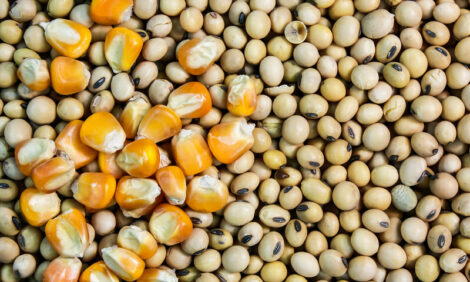



Single Issue Policy Making Threatening UK Farming Potential
UK - Single issue policy making at European and UK levels appears to be reducing the ability of British agriculture to achieve its objective of ‘producing more from less’, according to the Agricultural Industries Confederation – the trade body for Britain’s agriculture supply industry.AIC’s initial, but conservative, estimate is that the imbalance between opportunities and threats could be as much as £3.9 billion or a third of the value which farmers add to the UK economy.
AIC is calling on policy makers in the UK and Europe to work with industry and develop adequate modelling to ensure the cumulative effects of regulation are taken into account and based on sound data.
The AIC study – Food Supply in the Balance – conducted over the past two years investigates the Confederation’s concerns that policy is being made without an understanding of the cumulative effects of policy making across the whole farming industry. A desk study showed that national wheat output could reduce, by up to a half, if cumulatively the agricultural industry bears all the consequences of the threats without benefiting from any of the opportunities offered by new technology.
With funding from the Agriculture and Horticulture Development Board, AIC commissioned independent business analysts The Anderson Centre to develop a way to investigate the cumulative effects of the opportunities and threats facing the industry.
The study drew on 41 experts drawn from leading academic, commercial and trade organisations to identify potential opportunities and threats, which ranged from threats of animal disease and environmental controls to market volatility. Two workshops prioritised the opportunities and threats to be assessed.
Lack of data proved one of the first stumbling blocks to the process.
“It is a serious cause for concern that regulations being reviewed for issues such as ammonia emissions are lacking sufficient benchmark data to understand whether proposed limits are feasible or achievable,” says AIC Chief Executive David Caffall.
A final list of ten threats included six that arise from increased regulation. In addition, two opportunities were identified for which data was available to assess the potential.
“Given that the threats far outweigh the opportunities in this study, we believe that our estimates are very conservative,” says Mr Caffall.
Where credible data did exist, an interactive spreadsheet, was developed to estimate effects of the threats. The arable sector was more adversely affected – up to 30 per cent reduction in cereals – than livestock where dairy could be worst affected with up to 18 per cent reduction in output.
Of the opportunities, the greatest benefit could be obtained from redirection of public funded R&D. The experts, recognising that frozen budgets mean declining investment in real terms, believe that refocusing spend on production efficiency will offer a better return for the public, improve the UK’s standing in research and attract leading scientists to the UK.
“These indicative numbers, support the initial concern of the AIC board,” says Mr Caffall.
“They make it clear that there is a need for the whole industry to take the challenges discovered in this report seriously. Not just within the UK, but across the whole of the European Union.”
AIC will be making the interactive spreadsheet available to those engaged in policy development and working with its European trade partners to ensure the findings of this initial study are made available to a wide range of audiences.






